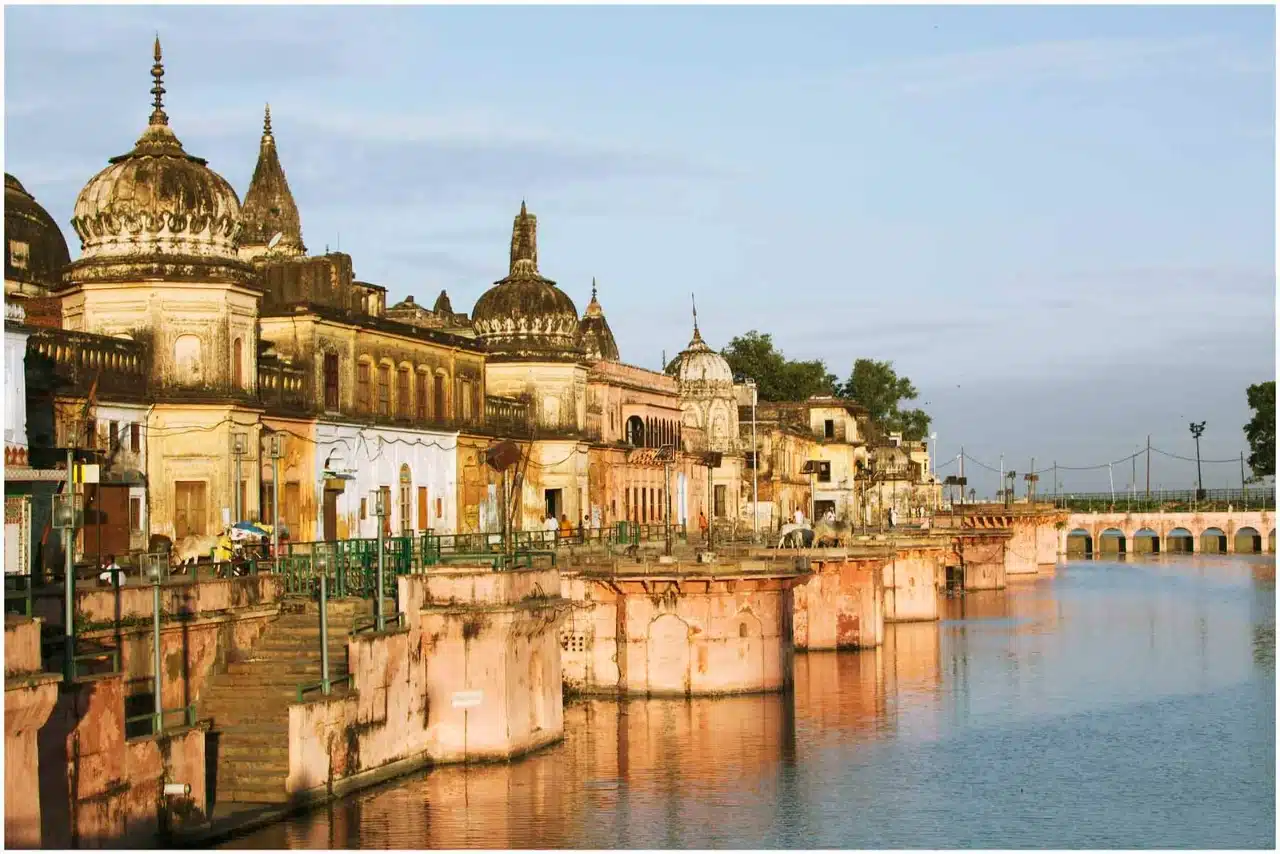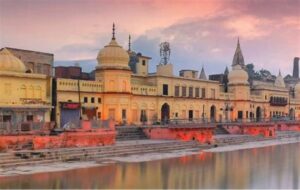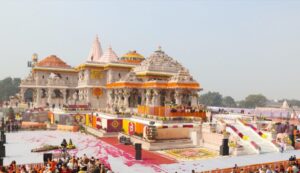As I delve into the captivating history and cultural richness of Ayodhya, I can’t help but be mesmerized by the city’s timeless allure. This ancient city, nestled along the banks of the revered Sarayu River, has long been revered as the birthplace of Lord Rama, one of the most revered deities in Hinduism. But Ayodhya’s significance extends far beyond its religious roots, offering a tapestry of historical landmarks, cultural traditions, and culinary delights that make it a truly enchanting destination.
Introduction to Ayodhya
Ayodhya, the legendary city of Lord Rama, is situated in the northern state of Uttar Pradesh, India. This ancient city has been a hub of spiritual and cultural significance for centuries, drawing pilgrims and visitors from all over the world. As I explore the city, I am struck by the palpable sense of history and reverence that permeates every corner, from the grand temples to the bustling markets.
Historical Significance of Ayodhya
Ayodhya’s history can be traced back to the Vedic era, when it was known as the capital of the ancient Kosala Kingdom. The city’s most celebrated chapter, however, is its association with the epic Ramayana, which recounts the life and adventures of Lord Rama, the beloved avatar of the Hindu deity Vishnu. Ayodhya is revered as the birthplace of Lord Rama, and the city’s temples and monuments bear witness to this enduring legacy.
Ayodhya’s Connection to Lord Rama
The deep-rooted connection between Ayodhya and Lord Rama is evident in the city’s numerous temples and shrines dedicated to the revered deity. The Ramjanmabhoomi Temple, believed to be the birthplace of Lord Rama, is the most significant of these, attracting millions of devotees each year. The Hanuman Garhi Temple, another iconic landmark, is dedicated to Lord Hanuman, the loyal companion of Lord Rama.
Ayodhya’s Religious and Cultural Importance
Ayodhya’s religious significance extends beyond its association with Lord Rama. The city is home to numerous other temples, ashrams, and spiritual centers that draw pilgrims from all over India. The Kanak Bhawan Temple, for instance, is renowned for its exquisite architecture and intricate carvings. The city also hosts several important Hindu festivals, such as Diwali and Chhath Puja, which are celebrated with great fervor and enthusiasm.
Famous Landmarks and Attractions in Ayodhya
In addition to its religious sites, Ayodhya boasts a wealth of historical landmarks and cultural attractions that captivate visitors. The Ashok Vatika, a lush garden believed to be the site where Sita was held captive by the demon king Ravana, is a popular destination. The Tulsi Manas Temple, with its stunning murals depicting scenes from the Ramayana, is another must-visit site.
Festivals Celebrated in Ayodhya
Ayodhya’s religious and cultural significance is reflected in the vibrant festivals celebrated throughout the year. The most renowned of these is the Diwali festival, which commemorates Lord Rama’s triumphant return to Ayodhya after his exile. During this time, the city is adorned with twinkling lights and the air is filled with the aroma of traditional sweets and delicacies. The Chhath Puja, a festival dedicated to the sun god, is another important celebration that draws thousands of devotees to the banks of the Sarayu River.
Ayodhya’s Contribution to Art and Literature
Ayodhya’s rich history and cultural heritage have also left an indelible mark on the realms of art and literature. The city has long been a hub for the production of traditional handicrafts, such as intricate wood carvings, brass utensils, and vibrant textiles. The Ramayana, the epic tale of Lord Rama’s life, has been a source of inspiration for countless poets, authors, and artists, who have interpreted and retold the story in myriad ways.
Ayodhya’s Culinary Delights
Ayodhya’s culinary landscape is as diverse and captivating as its cultural heritage. The city is renowned for its delectable sweets, such as the iconic Chana Dahi Vada and the fragrant Imarti. Local delicacies like the Dhuska, a savory lentil-based pancake, and the Litti Chokha, a traditional dish of baked dough balls stuffed with a spicy filling, are must-try experiences for any visitor.
Ayodhya’s Traditional Crafts and Industries
Beyond its religious and cultural significance, Ayodhya is also known for its thriving traditional crafts and industries. The city is renowned for its intricate wood carvings, which adorn many of the city’s temples and monuments. Ayodhya is also a hub for the production of brass and copper utensils, as well as vibrant textiles, including the iconic Chikankari embroidery.
Conclusion: Ayodhya’s Timeless Allure
As I bid farewell to Ayodhya, I am left with a profound sense of wonder and appreciation for this captivating city. From its rich historical legacy and deep-rooted religious significance to its vibrant cultural traditions and culinary delights, Ayodhya truly embodies the timeless allure of India’s heritage. Whether you are seeking a spiritual journey, a cultural immersion, or simply a chance to discover the enchanting charms of this remarkable destination, Ayodhya is sure to leave an indelible mark on your heart and mind.If you’re planning a visit to Ayodhya, consider booking a one-way cab to make your journey comfortable and convenient. With a range of reliable and affordable options available, you can sit back, relax, and soak in the enchanting sights and sounds of this remarkable city.




